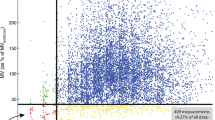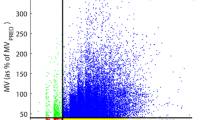Abstract
Prolonged time during endotracheal tube placement has been associated with poor outcomes, including cardiac arrest and death. For this reason, the accurate measurement of the duration of intubation time is an important metric in studies that evaluate interventions to improve airway outcomes. In the current study we correlated the gaps in routinely measured ventilatory parameters with duration of the intubation procedure to determine if these intervals could be used to accurately calculate the intubation time. Fifty-six random airway management encounters were video recorded along with a continuous video feed of the patient monitor. Intubation event times were measured and correlated with “gap” times of end-tidal carbon dioxide, airway pressure, airway flow, tidal volume, and respiratory rate defined as the disappearance of the parameter at the end of mask ventilation to the reappearance after intubation. Scatter plots were generated for intubation times versus each parameter time gap and correlation coefficients were calculated. Of the 56 recordings 50 of were suitable for analysis. The correlation of the gaps in airway pressure and airway flow correlated best with the duration of intubation (R2 = 0.88) and were available on all cases. The gap in measured tidal volume of 39 ± 53 s most closely approximated the actual duration of intubation of 38 ± 28 s, (R2 = 0.85, y = x − 0.87). During intubation, the disappearance gaps in tidal volume, and the airway pressure and flow waveforms highly correlate with the duration of the intubation procedure and may be useful in the evaluation of airway management interventions. However, just as there are limitations to a labor-intensive method of recording airway management timing, there are limitations to using an automated method.

Similar content being viewed by others
References
Peterson GN, Domino KB, Caplan RA, Posner KL, Lee LA, Cheney FW. Management of the difficult airway: a closed claims analysis. Anesthesiology. 2005;103:33–9.
Aziz MF, Dillman D, Fu R, Brambrink AM. Comparative effectiveness of the C-MAC video laryngoscope versus direct laryngoscopy in the setting of predicted difficult airway. Anesthesiology. 2012;116:629–36.
Jungbauer A, Schumann M, Brunkhorst V, Borgers A, Groeben H. Expected difficult tracheal intubation: a prospective comparison of direct laryngoscopy and video laryngoscopy in 200 patients. Br J Anaesth. 2009;102:546–50.
Narang AT, Oldeg PF, Medzon R, Spector JA, Robinett DA. Comparison of intubation success of video laryngoscopy versus direct laryngoscopy in the difficult airway using high-fidelity simulation. Simul Healthc. 2009;4:160–5.
Zamora JE, Nolan RL, Sharan S, Day AG. Evaluation of the Bullard, Glidescope, Viewmax and Macintosh laryngoscopes using a cadaver model to simulate the difficult airway. J Clin Anesth. 2011;23:27–34.
Sun DA, Warriner CB, Parsons DG, Klein R, Umedaly HS, Moult M. The Glidescope video laryngoscope: randomized clinical trial in 200 patients. Br J Anaesth. 2005;94:381–4.
Naik VN, Matsumoto ED, Houton PL, Hamstra SJ, Yeung RY, Mallon JS, Martire TM. Fiberoptic orotracheal intubation on anesthetized patients. Anesthesiology. 2001;95:343–8.
de Oliverira Filho GR. The construction of learning curves for basic skills in anesthetic procedures: an application for the cumulative sum method. Anesth Analg. 2002;95:411–6.
Rowe R, Cohen RA. An evaluation of a virtual reality airway simulator. Anesth Analg. 2002;95:62–6.
Nileshwar A, Garg V. Comparison of Bullard larnygoscope and short-handled Macintosh laryngoscope for orotracheal intubation in pediatric patients with simulated restriction of cervical spine movements. Paed Anaes. 2010;20:1092–7.
Karim YM, Swanson DE. Comparison of blind tracheal intubation through the intubating laryngeal mask airway. Anesthesiology. 2011;66:185–90.
Teoh WH, Teoh WH, Sia AT, Fun WL. A prospective, randomized, cross-over trial comparing the EndoFlex and standard tracheal tubes in patients with predicted easy intubation. Anesthesiology. 2009;64:1172–7.
Arslan ZI, Yildiz T, Baykara ZN, Solak M, Toker K. Tracheal intubation in patients with rigid collar immobilization of the cervical spine: a comparison of Airtraq and LMA CTrach devices. Anesthesiology. 2009;64:1332–6.
Langeron O, Masso E, Huraux C, Guggiara M, Bianchi A, Coriat P, Riou B. Prediction of difficult mask ventilation. Anesthesiology. 2000;92:1229–36.
Acknowledgments
This study was conducted in accordance with laws of the United States and in compliance with Vanderbilt University’s IRB policies.
Conflict of interest
The authors declare that they have no conflict of interest.
Author information
Authors and Affiliations
Corresponding author
Rights and permissions
About this article
Cite this article
Hester, D., McGrane, S. & Higgins, M.S. Respiratory parameters as a surrogate marker for duration of intubation: potential application of automated vital sign collection. J Clin Monit Comput 27, 561–565 (2013). https://doi.org/10.1007/s10877-013-9464-3
Received:
Accepted:
Published:
Issue Date:
DOI: https://doi.org/10.1007/s10877-013-9464-3




